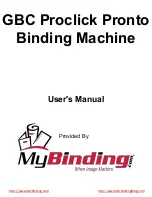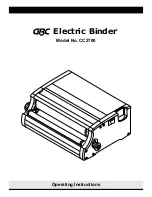
4
5.Check that operator's presence controls, safety switches and shields are at-
tached and functioning properly.
Do not operate unless they are functioning properly.
6.If the brake operation is faulty or the parking brake lever has noticeable play, be
sure to adjust or repair them before operating the machine.
7.Replace faulty mufflers.
Operation
1.Do not operate the engine in a confined space where dangerous carbon monox
-
ide fumes can collect.
2.Only operate in good light, keeping away from holes and hidden hazards.
3.Before attempting to start the engine, disengage all attachments, shift into neu-
tral, and engage the parking brake.
Only start engine from the operator`s position.
Use seat belts if provided.
4.Remember there is no such thing as a safe slope. Travel on grass slopes re-
quires particular care.
To guard against overturning:
[1]Do not stop or start suddenly when going up or downhill.
[2]Engage clutch slowly, always keep machine in gear, especially when traveling
downhill.
[3]Machine speeds should be kept low on slopes and during tight turns.
[4]Stay alert for humps and hollows and other hidden hazards.
[5]Never operate across the face of the slope, unless the machine is designed
for this purpose.
[6]Never drive the machine on a slope with an angle of gradient that is greater
than that specified or in a place where there is a danger of the machine slip
-
ping.
5.Never operate the machine with damaged guards, shields, or without safety pro-
tective devices in place.
Be sure all interlocks are attached, adjusted and functioning properly.
6.Do not change the engine governor settings or overspeed the engine. Operating
the engine at excessive speed may increase the hazard of personal injury.
7.Do the following before leaving the operator`s position.
[1]Stop on level ground.
[2]Disengage the power take-off and lower the attachments.
[3]Change into neutral and set the parking brake.
[4]Stop the engine and remove the key.
8.Disengage the drive to attachments, stop the engine, and remove the ignition
key in the following conditions.
[1]Before refueling.
[2]Before making height adjustment unless adjustment can be made from the
operator's position.
[3]Before cleaning blockages.
[4]Before checking, cleaning, or working the machine.
[5]After striking a foreign object or if an abnormal vibration occurs.
Inspect the machine for damage and make repairs before restarting and op-
erating the equipment.
9.Keep hands and feet away from the cutting units and the rotating parts.
10.Look behind and down before backing up to be sure of a clear path.
11.Do not carry passengers.
12.Never operate while people, especially children, or pets are nearby.
13.Slow down and use caution when making turns and crossing roads and side-
walks.
14.Disengage drive to attachments when transporting or not in use.
15.When using any attachments, never direct discharge of material toward bystand-
ers nor allow anyone near the machine while in operation.
16.Do not operate the machine under the influence of alcohol or drugs.
17.Take care when loading or unloading the machine into a trailer or a truck. Load
or unload the machine in a flat and safe place. Before loading or unloading, set
the parking brake on the truck or trailer, stop the engine, and chock the wheels.
When transporting the machine on a truck or a trailer, set the parking brake, stop
the engine, and fasten the machine to the truck with a rope or other suitable re-
straining device that has sufficient strength.
When using a loading ramp, select one with sufficient strength, length, and width
and that will not cause the machine to slip.
18.Close the fuel valve before transporting the machine.
19.Use care when approaching blind corners, shrubs, trees, or other objects that
may obscure vision.
20.Do not take your eyes off the road ahead. Do not operate the machine with no
hands.
21.Reduce the throttle setting during engine run-out and, if the engine is provided
with a shut-off valve, turn the fuel off at the conclusion of operation.






































